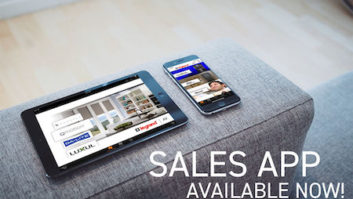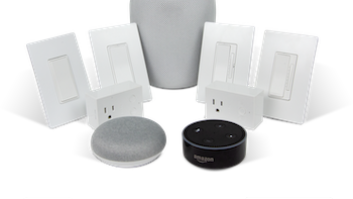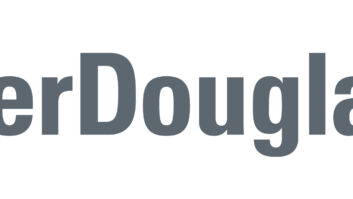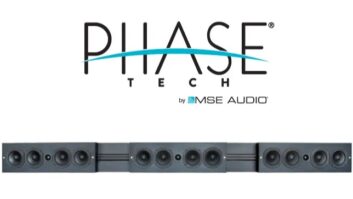
Right now is an incredibly exciting time to be in the loyalty business. I’m a big execution guy – I like hearing of ground breaking new ideas as much as the next person but what really gets me excited is when I see great execution. Part of what makes technology so compelling to me is the way that it enables the execution of some pretty incredible ideas that may have even been dismissed as impossible as recently as ten or fifteen years ago. When you consider the potential bottom line effect that even a one percent increase in retention can have for many big brands, it’s incredibly empowering to know you can swing for the fences when planning your next loyalty program.
When it comes to the way brands introduce new sales or consumer incentives, it’s great to see so many companies are finally starting to get it right where user experience is concerned. One thing that keeps popping up however, is the question of whether or not the delivery of that great user experience hinges on building native applications for specific mobile devices.
Let’s get to the point: it has now been more than two years since mobile browsing and application use actually surpassed usage of laptops and the beloved desktop PC. It’s time to meet your channel and consumers where they are at, and that is on mobile devices. If you and your company are with me so far, but still asking yourselves if you need to develop a customized native application, then read on.
What Is Native, What Is Responsive?
Let’s start with a simple definition for each of these terms:
A native application refers to software that is meant to run solely on a specific platform. Games and other applications that need to access a phone’s hardware tend to be the best examples of native applications. Many developers will start by releasing an iPhone-only version of their game, promising “Android is in development and we’ll keep you posted.” This means that they have launched into the marketplace with an application that has been built to run on an iPhone and will run most optimally on the phone’s most current operating system (OS) to the exclusion of other devices and operating systems.
What is a responsive web application? For our purpose of delivering a user-friendly interface (e.g., your channel incentive program), think of it as a modern and light way to easily develop and deliver a digital brand experience across a multitude of different devices and screens. Above all, think of responsive design as a device-agnostic way to scale the desired user experience for your application. If your goal is to make your brand universally available to your channel or end-customers, a responsive web applications is the way to go.
Global Enterprise/Global Marketplaces
If you’re a regular reader of Twice, chances are that you’re global brand who sells through an indirect model and with a complex channel. Heck, even national brands know that marketplace variability can be significant within a single territory, so it’s not news to you that global marketplaces are often unrecognizable from one place to another. For a global brand to deliver any sort of technology, it is critical to remember that the types of devices we commonly use in North America actually represent only a tiny sliver of the total devices being used around the world. The considerations I’m about to list actually apply to every size of business, but are particularly significant for a global enterprise.
The Total Cost of Ownership
This is a huge drawback of building a native application; obvious to some, but seemingly not obvious enough. Building a native application means development costs for building new software each time you want to launch on a new platform (iOS, Android, Windows etc.). Additionally, each time you launch on a new platform, you are looking at rising variable costs for ongoing maintenance of that application associated with upgrades and incremental improvements for each operating system.
With a responsive application, you can look at it like this: you don’t need to set out to build an iPhone app and then make sure that you are keeping it updated as the platform evolves. Likewise, you don’t need to do the same in order to deploy for Android or other platforms you may want to offer.
The best feature of responsive web application is that it can be deployed across all web-enabled devices and, in the presentation layer, be coded with the logic to know what sort of device it’s on, whether it’s being held in portrait or landscape position and then render itself accordingly for that device. By building a responsive site, you know you’ve built in the viewports to allow your interface to scale up or down appropriately to deliver the best possible user experience
Upgrades For Everyone
The other challenge of a native application is the user friction that it creates each time a software update is launched. In order to enjoy the update, the users must take the time to download the update to their device simply to have the application continue to work smoothly.
On the other hand, the responsive web experience is more seamless because even as new updates may be regularly released (our own team releases enhancements each week, for example), your users are getting the latest and greatest version of your application each time they log in to use it.
With a native app, you are building for one platform in a world that has millions of different hardware configurations and screen sizes with new ones being released constantly.
Here’s When You Should Look At Building A Native App
Building a native application is great when you need to access the hardware of the phone, such as the GPU or other components that are specific to a certain platform. Keep in mind that more common hardware needs such as cameras and locations services can be accessed through most web devices and have come to be less of a consideration for this.
Consider the breadth of distribution for your application. If you need for it to be specialized and to leverage the device’s hardware, then native is the way to go. If you need for your app to have a broad reach and be supported on multiple devices for a reasonable cost, then responsive will get you there more quickly and easily.
Looking for some great practices to update your consumer rebate programs? Check out our free e-book, Leveraging The Consumer Rebate for a light but actionable read that shares improved practices learned from fulfilling millions of consumer rebate claims.













